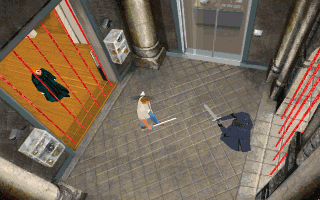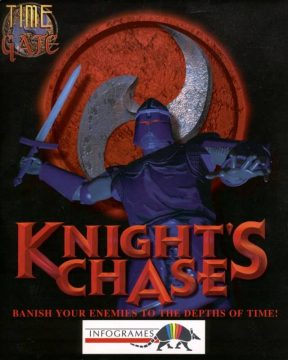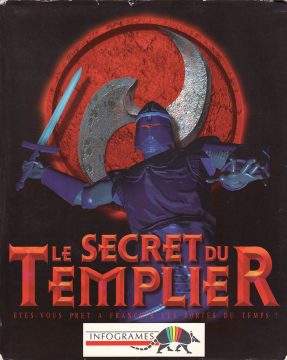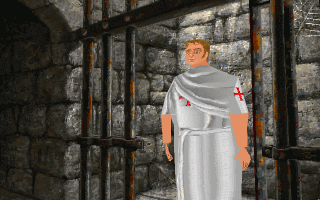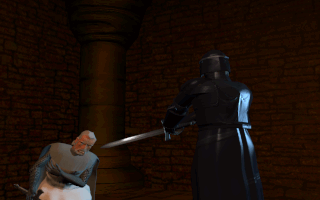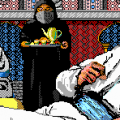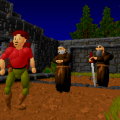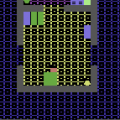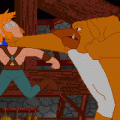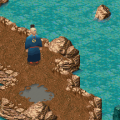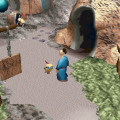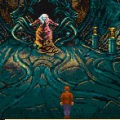Time Gate is a real oddball to the series: Neither really a spin-off nor a rip-off, the game known as Le Secret du Templier (“The Secret of the Templar”) in Molière’s language, was originally supposed to be the real Alone in the Dark 4. Unfortunately, with Resident Evil dominating what had now become a genre, the franchise wasn’t deemed up-to-date anymore, and Chardot and his team took a very different route. The idea was to create a new trilogy implying time travel with an overarching plot about reincarnation and ancient Egyptian mythology. Knight’s Chase was the first episode and the only one to come to life.
The protagonist is William, an American student in Paris, who has been enjoying lovely days with his French girlfriend Juliette. One night, a black knight breaks into his room and tries to murder him. After fighting an epic battle in his underpants, Willy discovers a magic mirror that shows his girlfriend ready to get grilled on a pyre by an overzealous inquisitor. In a effort to educate youngsters, the nefarious character compels the hero to reach le musée de Cluny (National Museum of Middle Ages). After a major break-in, Willy gets mugged by pissed-off security guards and thrown in a well. Through mysterious circumstances, he eventually finds himself in the year 1329, inhabiting the body of his ancestor Thibault de Montdidier (one of the founders of the Knights Templars). In a stroke of bad luck, he ends up locked in the knights’ former commandery by the evil inquisitor.
Once again, the plot gets crazy very fast, a tendency that continues until the very end. Words can hardly describe the sheer insanity of the final twist. Other than the Alone in the Dark, the game never explains the workings and motivations regarding time travel, reincarnation, the main bad guy, or anything at all. It really feels like the team was only setting up the premise for an overarching story that never manifested. Still, the game impresses with the thorough research made about the history of the Knight Templars. Titbits of medieval history are thrown at the player all the time.
The engine is basically the same as the one used in Alone in the Dark, but backgrounds and characters are much more detailed, the latter finally getting textured surfaces. The environments are pleasant to look at, especially the many rooms of the commandery. The Name of the Rose probably has made a strong impression on the art team; they even put in a blind monk. The sound design on the other hand isn’t the bright side of the game. The voice acting is as terrible as usual and the music, composed by Pascal Camisotto, is at best forgettable.
While the game really manages to have its own personality, it still leaves the sour taste of playing an Alone in the Dark title with the identity taken away. In combat the only difference is the presence of a salvatory auto-parade. The puzzles are fairly good and most of your actions are rewarded with a little in-engine cutscene. The game is even more linear that its fore fathers, though: Just leaving the “correct” room will make a crossbowman appear out of thin air and kill William; once again quite a blunt way to guide the player.
Aside from the medieval setting, there is not much to distinguish Time Gate from its unofficial forebears. After pushing the old engine in its last corner, Chardot eventually gave up working on his baby and resigned from Infogrames to create his own studio. Darkworks and later on Eden, developers of the following Alone in the Darktitles, had the courtesy to consult him for the screenplay of their interpretations of the franchise, though. After a few years in the movie industry, he came back to video games and now writes Nancy Drew stories.
